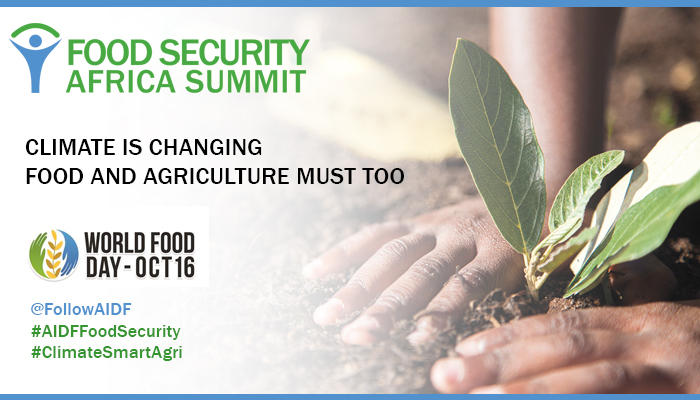News & Updates
World Food Day: “Climate is changing. Food and agriculture must too”
17 October 2016

The right to food is a basic human right; however, some 795 million people in the world do not have enough food to lead a healthy and active life. That equates to about one in nine people on earth.
On Sunday 16th October, people around the world will come together to declare their commitment to eradicate hunger in our lifetime. Because when it comes to hunger, “the only acceptable number in the world is zero.”
This year’s theme “Climate is changing. Food and agriculture must too” focuses on one of the most pressing issues related to climate change, food security.
With more than 80 percent of the world’s most food-insecure people living in countries prone to natural disasters with high levels of environmental degradation, the World Food Programme highlighted some of the key facts on how disasters are linked to hunger and malnutrition.
- Above ten percent of the world’s population (980 million people) live on less than US$1.25 a day in rural areas where they depend on agriculture and face increasing disaster risk.
- By 2050 hunger and child malnutrition could increase by up to 20 percent as a result of climate-related disasters.
- Droughts have severe impacts on the dietary diversity and reduce overall food consumption. In Niger, regardless of the birth location, children born during a drought are more than twice as likely to be malnourished between the ages of one and two.
- Hunger cannot be eliminated in our lifetime without building the resilience of vulnerable people to increasing disaster risk and climate change.
Learn more about hunger and malnutrition from WFP’s comprehensive list of Facts About Hunger and Malnutrition.
The effects of climate change, coupled with the growing world population which is expected to reach 9.6 billion by 2050, places mounting pressure on global agriculture and food systems. The Food and Agriculture Organization of the United Nations estimates that agricultural production must rise by about 60 percent by 2050 in order to feed this larger population.
Currently, many agricultural and food systems are inherently unsustainable:
- Livestock contributes to nearly two thirds of agricultural greenhouse gas (GHG) emissions, and 78% of agricultural methane emissions
- By 2050, catches of main fish species are expected to decline by up to 40 percent in the tropics, where livelihoods, food and nutrition security strongly depend on the fisheries sector.
- Over 1/3 of food produced worldwide is lost or wasted. That amounts to about 1.3 billion tons per year.
If we are to achieve Zero Hunger by 2030, climate change is a challenge that must be addressed. The only way to guarantee the wellbeing of ecosystems and rural populations and reduce emissions is adaption. Agriculture and food systems must become more resilient, productive and sustainable.
Join the discussion on lessons learned from recent drought crisis in Sub-Saharan East Africa at the upcoming 2nd annual Aid & Development Africa Summit 2017 held in Nairobi, Kenya. The session will examine disaster response activities to recent drought emergency in the region, identifying new best practice, challenges, possible solutions and what can be done better next time.
For more information, please visit: http://africa.aidforum.org/agenda
The Aid & International Development Forum (AIDF) also invites you to the AIDF Food Security Africa Summit 2017: Partnerships & Innovations for Climate Smart Agriculture. The Summit will focus on how to address the prominent climate change challenges and other issues that must be tackled in order to establish a sustainable and secure food future.
For more information, please visit: http://food-security-africa.aidforum.org
To register your interest, please get in touch with Alina O’Keeffe at aokeeffe@aidforum.org